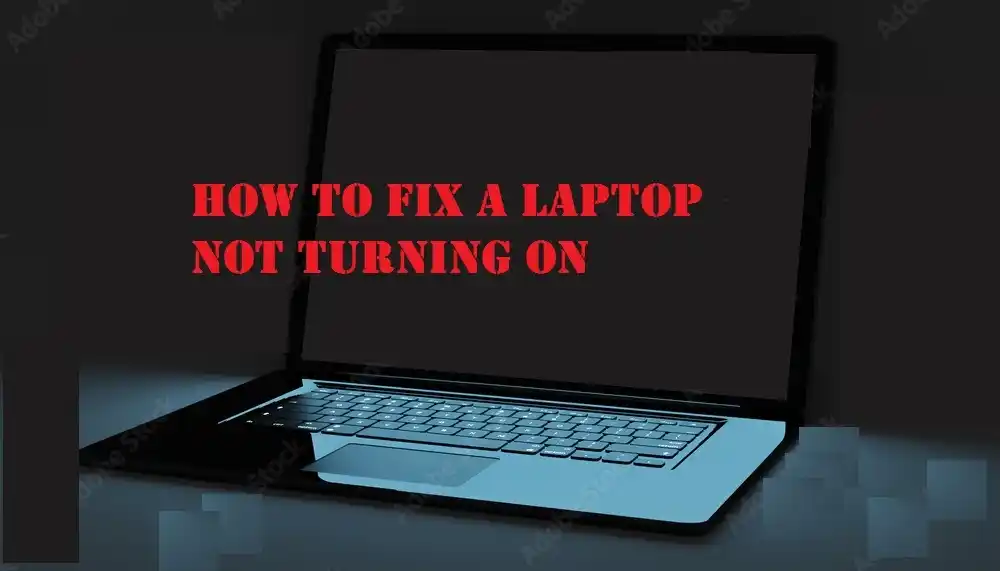It is really frustrating when you hit the power button and find your laptop silent or showing a blank screen. A laptop not turning on is a stressful situation. From serious hardware issues to minor power glitches, there could be different reasons for the blackout. We help you troubleshoot the problem with our step-by-step guide.
What Are the Common Power Issues of Your Laptop?
Your laptop may have different types of power problems.
- Intermittent power or no power- Even though you hit the power button, the laptop does not turn on. In some cases, your device restarts or turns off unexpectedly.
- Power button problems- Most users claim that the power button has stuck or is not responding.
- Power indicator- Sometimes, your laptop’s power indicator or LED does not light up.
- Battery problems- Your laptop battery drains quickly or does not charge at all. (check our guide about laptop battery charging issues)
Why is My Laptop Not Turning On?
You have pressed your laptop’s power button. Still, the device does not turn on. What are the potential reasons behind this issue?
- Defective battery– A faulty battery does not allow your laptop to turn on. Most often, the battery starts losing its charge.
- Issues with the power supply– You might have chosen a bad power adapter or have forgotten to plug it into the outlet.
- Faulty components– Some hardware failures can prevent your laptop from turning on. A defective hard drive or motherboard can cause these issues.
- Overheating– Your laptop has safety features that shut down the device when the components get hot. So, your laptop won’t turn on even though you have pressed the button.
- BIOS issues– When you start booting the device, it needs a Basic Input/Output System. However, a corrupted BIOS prevents the laptop from booting up. In some cases, problems with the CMOS battery storage BIOS settings lead to the same issue.
- Software complications– An infected or faulty operating system file is another reason behind your laptop not turning on.
- Peripheral device interference– During the laptop booting process, external devices (such as USB devices) can cause interference.
- Loose parts– Internal components and cables might have become loose. Due to the loose connection, you cannot turn on the laptop.
How To Solve The Problem- Laptop Won’t Turn On
Check for a few tips for fixing the laptop issues.
Check Your Laptop’s Power Supply
- Make sure you have securely connected your charger cables.
- Confirm that the outlet is working well and the source of power is active.
- The internal battery must be properly connected.
- There should be the right amount of electricity in the socket.
Replace Defective Hardware
Remove the flash drives and USBs and check the potential problems. After removing the hardware, boot your laptop.
This simple step could solve your problem of the laptop not turning on.
Solve Overheating Problems
Overheating is another factor preventing your laptop from turning on. Check if there is dirt in the cooling vents. Also, ensure you have not placed the device on a soft surface that may block smooth airflow. Allow the laptop to cool naturally before starting your work or playing games.
You can check our guide on how to keep your laptop cool.
Understand LED Indicators
Many HP laptops come with LED lights that convey power status. When you have connected your device to AC power, the indicator near the power port displays-
- No light- Power not detected from the adapter
- Blinking- Potential power adapter or battery problems
- Orange light- Low battery charge
- Green or white light- Normal battery charging
The AC adapter’s LED must also remain stable when you plug it into the outlet.
Pay Attention to the Beep Code Sounds
Defects in the motherboard components lead to a series of beeps in your laptop. You have to calculate the number of codes to detect the failed component.
You can go to the manufacturer’s official website and interpret the particular code. Some codes indicate processor problems, while others signify memory issues.
Remove Residual Electricity
Detach the battery, disconnect the power adapter, and then press and hold the power button for at least 30 seconds.
Now, reconnect the adapter and wait for 30 seconds. Turn your device on; if it starts, switch it off. Reinstall the battery in your device.
Remember, sudden power-off of your laptop indicates electric shocks. The integrated safety mechanism disconnects the power to ensure protection.
Troubleshoot the Battery
A battery problem is a common cause of your HP or Dell laptop not turning on. However, the troubleshooting process depends on if your battery is detachable or not.
For a laptop with a removable battery, turn the device over. Detach the battery; check the silver or golden metal strip and remove dirt. In some cases, a swollen battery prevents you from turning the device on. You should not reinstall the battery.
For a laptop with a non-removable battery, you can choose the battery reset process. Hold the power button for about 15 seconds and disconnect the AC adapter. After connecting the adapter, charge the device for 30 minutes.
Summing Up
Troubleshooting a laptop not turning on is a simple process if you have chosen a methodical approach. Check the power sources and examine the battery health. Software updates and hardware assessments may also solve the problem. However, if the cause of the issue is still not identifiable, contact professionals for solutions.

